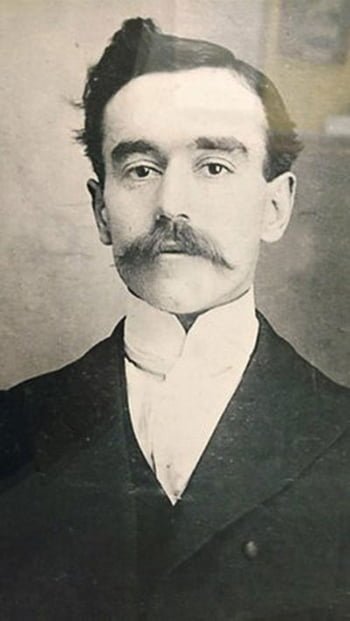General Introduction to the Pentecostal Revival

A young Charles Parham
The rise of the Pentecostal Movement has become a phenomenon of our times. The Pentecostal/Charismatic church now numbers in excess of 550 million adherents across the world and since the second half of the twentieth century it has experienced exponential growth. It is no exaggeration to say that this movement has witnessed the greatest number of conversions and church plants in the entire history of the worldwide church! Such growth has caused the twentieth century to be described as the “Pentecostal Century” or the “Century of the Spirit.”
There were many streams of Christendom that converged to produce this mighty river of Spirit-filled Christianity. Theologically, John Wesley’s doctrine of a “second blessing” of sanctification, which one of his Methodist associates, John Fletcher, called a “baptism in the Holy Spirit,” was the seed from which all else grew.
In the mid-nineteenth century Edward Irving, a Presbyterian minister, saw and then experienced a restoration of spiritual gifts, first in Scotland and then in London. The gift of tongues and prophecy were regularly exercised in his meetings, which often gathered two thousand people. Healings were also experienced.
Charles Finney undoubtedly experienced a mighty infilling of the Spirit after his conversion and his successor as president of Oberlin College, Asa Mahan, published a book entitled “The Baptism of the Holy Ghost.” He thereafter widely proclaimed its message.
The Keswick movement’s “Higher Life” teachings took Wesley’s “second blessing” and changed it’s focus from ‘inner cleansing’ and ‘heart purity,’ to an ‘enduement of spiritual power for service.’ This was popularised by Hannah Whitall Smith, William E. Boardman, D. L. Moody and Reuben Torrey. Divine healing was added to the mix by other Keswick supporters like the Americans, A. B. Simpson and A. J. Gordon.
The western world was awash with holiness movements at the end of the nineteenth century where people were vigorously seeking after God for more power. American Camp meetings had experienced supernatural phenomenon for over a century and anything that expressed a living, Holy Spirit empowered Christianity was described as “Pentecostal”.
The Pentecosatl Revival breaks out in 1901
It was into this spiritual milieu that Charles Parham emerged. His story is told in the ‘Heroes’ section of this site. Parham is known as the theological ‘father’ of the movement because he was the first to teach that ‘speaking with tongues’ was the initial evidence of the Baptism with the Holy Spirit. It was at his Bible School in Topeka, Kansas that there Agnes Ozman was the first to speak in tongues during a Holy Spirit outpouring on January 1st 1901. Subsequently he travelled as an itinerant revivalist, with powerful signs following his ministry.
He started another Bible School, in Houston, Texas, where William Seymour heard the message of the Baptism in the Spirit with speaking in tongues. He took this message to Los Angeles and the Azusa Street Pentecostal Revival broke out. His story is also in the Pensketches section of this site.
Thousands of Christians visited Azusa Street from around the world in 1906-9 and took the Pentecostal message – and the experience – back to their homes and to the mission field.
Thomas B. Barratt was baptised in the Spirit while staying in New York in November 1906 after hearing news of the Azusa revival. He took the message back to Norway then over to his native England. Alexander Boddy in Sunderland became the catalyst for a myriad of spiritually hungry seekers and his invitation to Barratt to visit in 1907 began a British revival. George and Stephen Jeffreys, Smith Wigglesworth and others received the gift of the Spirit at Sunderland. The first organised Pentecostal missionary agency was birthed in Sunderland as the Pentecostal Missionary Union and the message was taken to the nations.
The Pentecostal message spread like wildfire everywhere and, despite two world wars, economic depressions, open hostility from existing denominations and periodic persecution the movement has become a major player on the world scene. It was described in 1958 by Henry P. Van Dusen as the “Third Force in Christendom,” The Pentecostal Movement embodies a passion for a return to New Testament Christianity. It has been a shining beacon to an archaic and irrelevant church and may well provide the pattern of a great end-time revival in the 21st century. Let it be, O Lord!
For further research:
Pentecostalism Britannica
Pentecostalism Wikepedia



